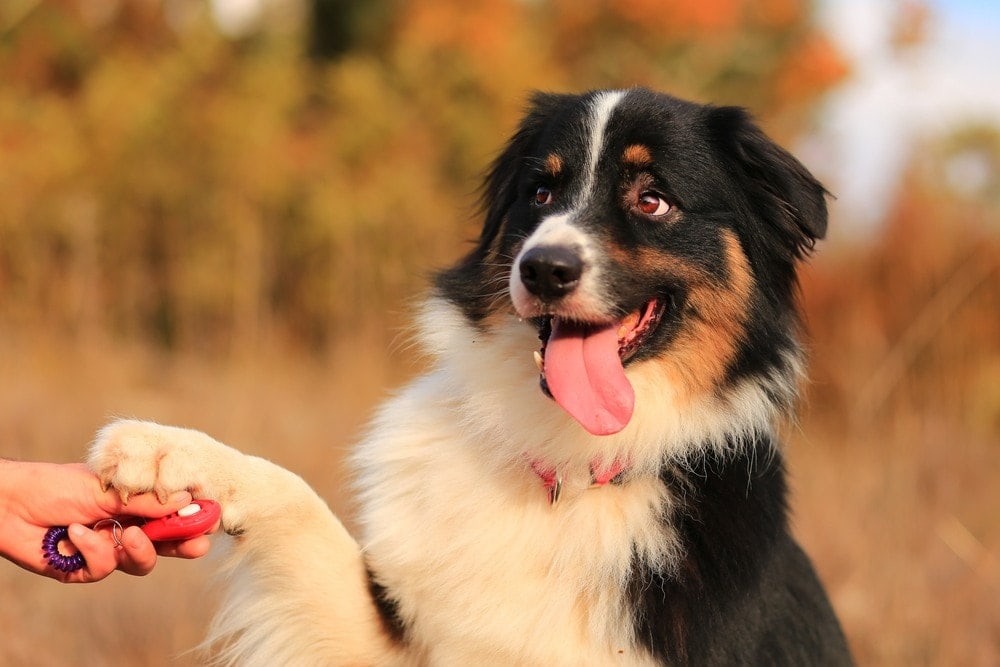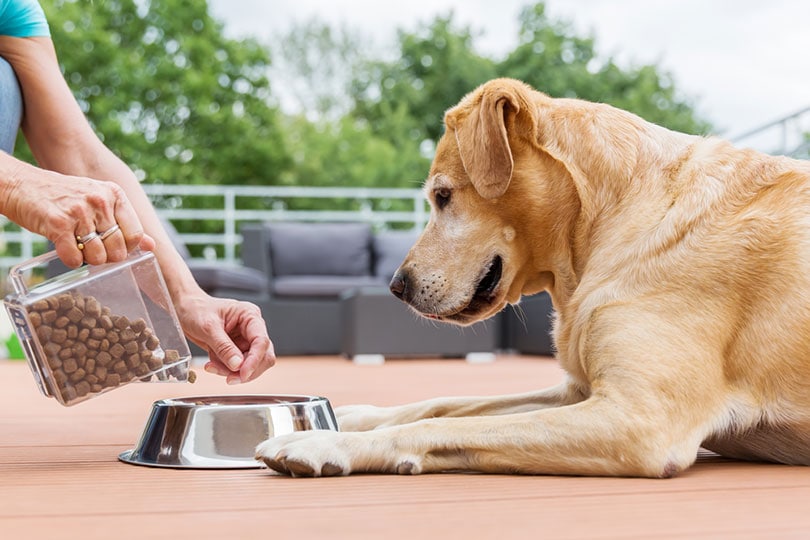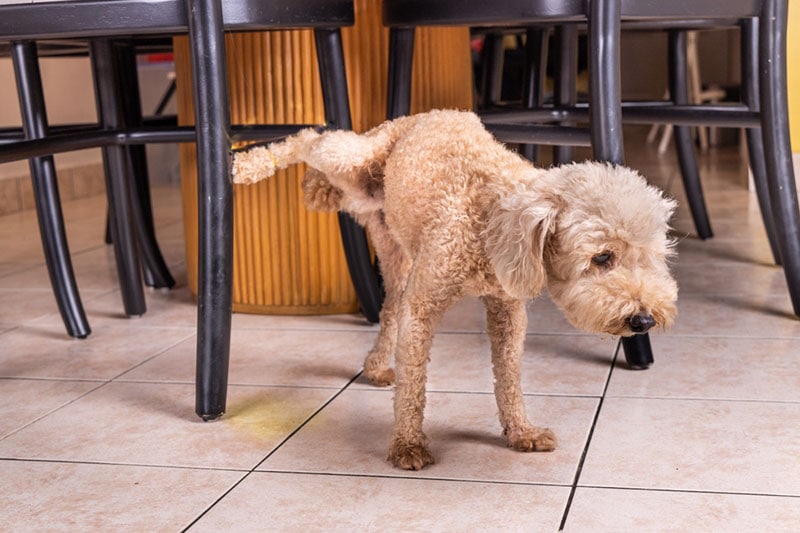Cardigan Welsh vs Pembroke Welsh Corgi: What’s the Difference? (With Pictures)

Updated on
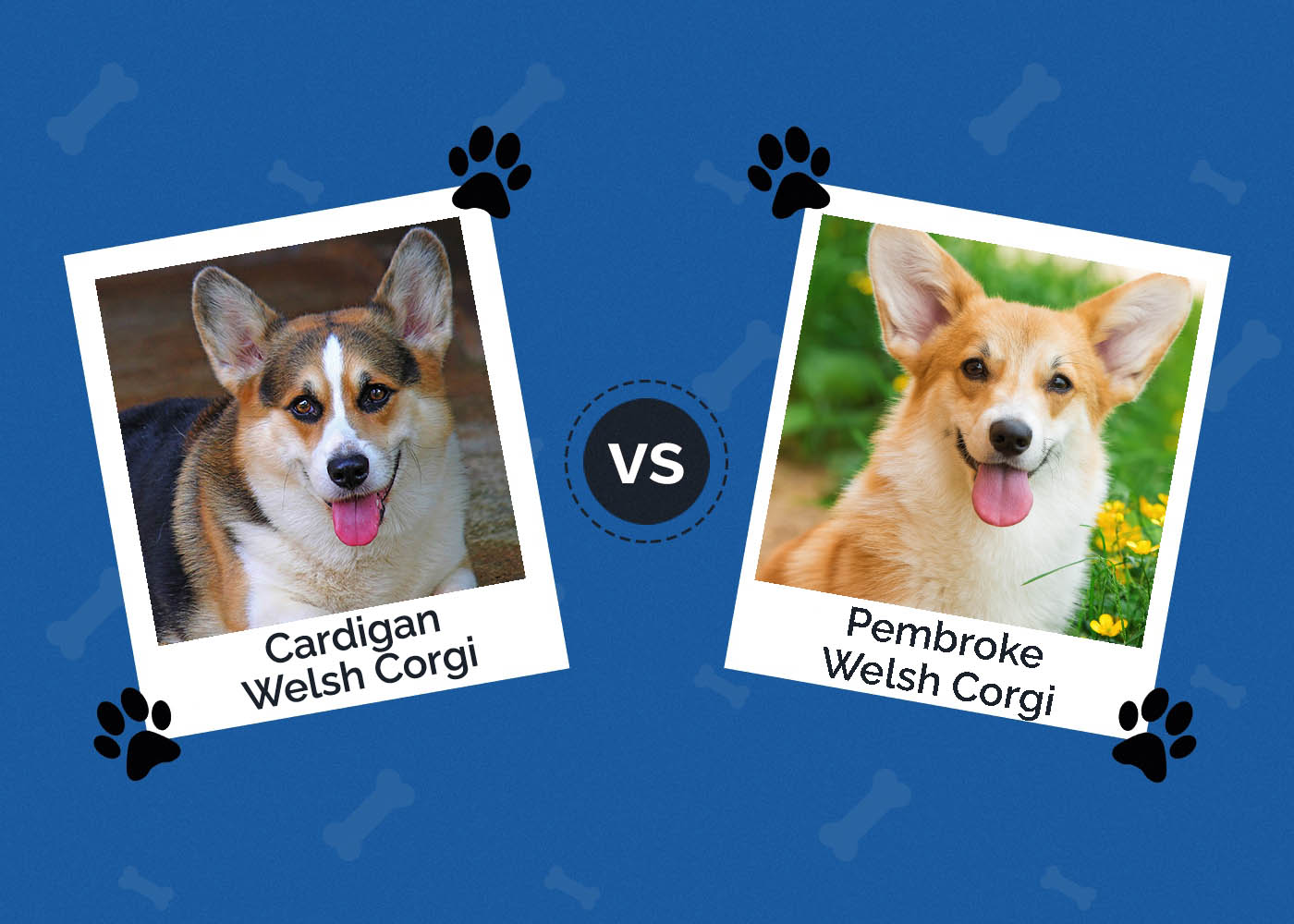
Fun fact: There are two types of Corgis, the Cardigan Welsh Corgi and the Pembroke Welsh Corgi. Although they are similar in many ways and can be difficult for the untrained eye to distinguish between them, there are telling characteristics to both.
They have slightly different personalities and physical qualities based on their distinctive breeding history. That said, both varieties of the Corgi make excellent family friends.
If you are attempting to find the perfect match for you and your family, then read on to discover what makes these special pups different from each other.
Visual Differences
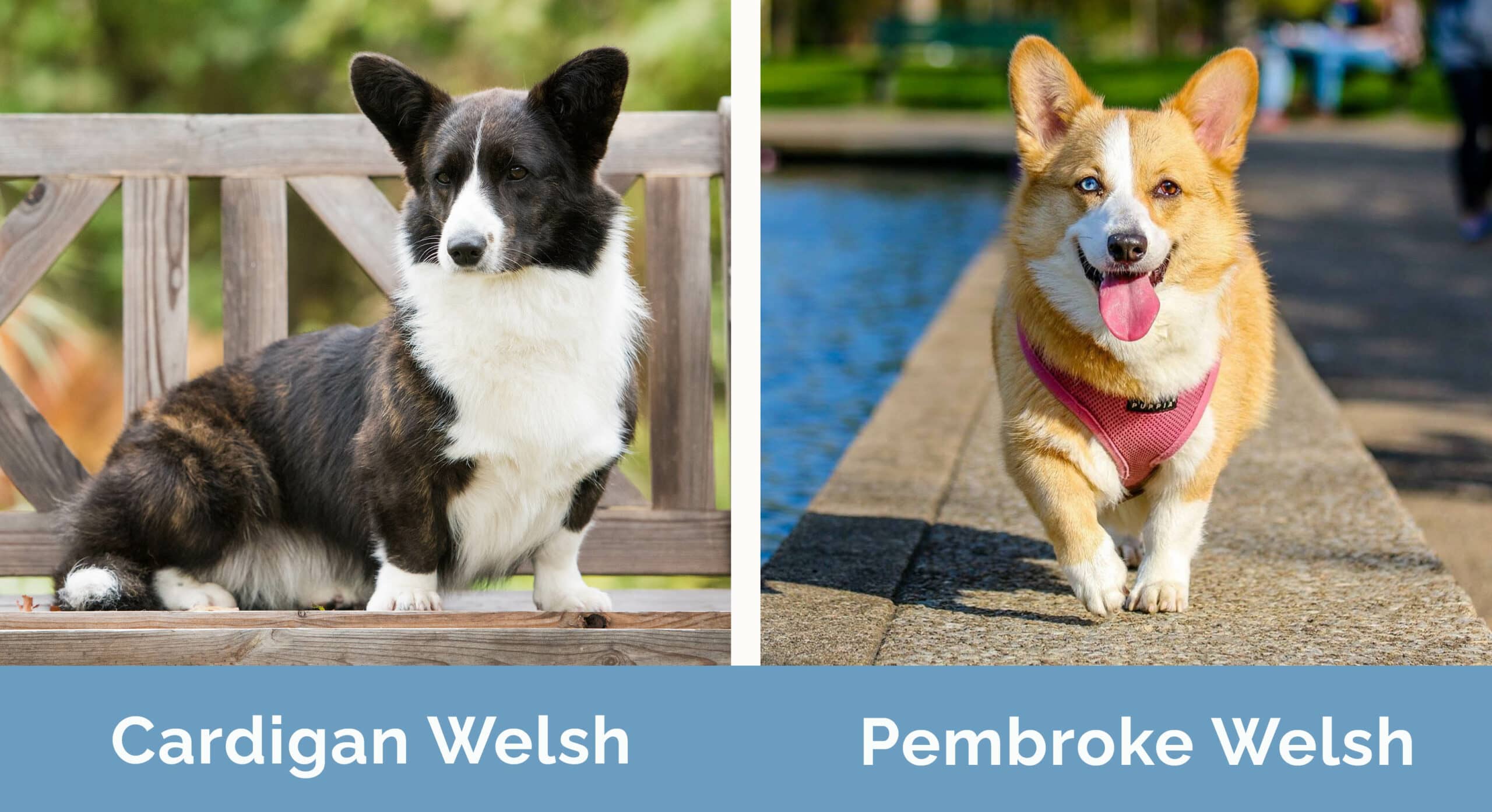
A Quick Overview – Cardigan vs Pembroke Welsh Corgi
- Average Height (adult): 10-12 inches
- Average Weight (adult): 25-38 pounds
- Lifespan: 12-15 years
- Exercise: 20+ min/day
- Grooming needs: Moderate
- Family-friendly: Yes
- Dog-friendly: Often
- Trainability: Good
- Average Height (adult): 10-12 inches
- Average Weight (adult): 20-30 pounds
- Lifespan: 12-14 years
- Exercise: 45+ min/day
- Grooming needs: Low
- Family-friendly: Yes
- Dog-friendly: Often
- Trainability: Excellent
Cardigan vs. Pembroke: Unique Histories
Cardigan Welsh Corgis are among the oldest dog breeds in the world. Their lineage dates back to about 1200 B.C. Brought by Celtic warriors to the rest of Great Britain, they eventually settled in Wales and became heavily associated with Cardigan’s town. It is that association that brought about their name, “Cardigan” Corgis.
The Pembroke is partially the offspring of the Cardigan Corgis. They were developed much later, in 1107 A.D. They originated in Belgium, belonging to a variety of craftsmen who eventually moved their trade to South Wales upon receiving an invitation from Henry I.
These herding dogs mated with the already popular Cardigans and became the Pembrokes, named after their predominantly lived-in country.
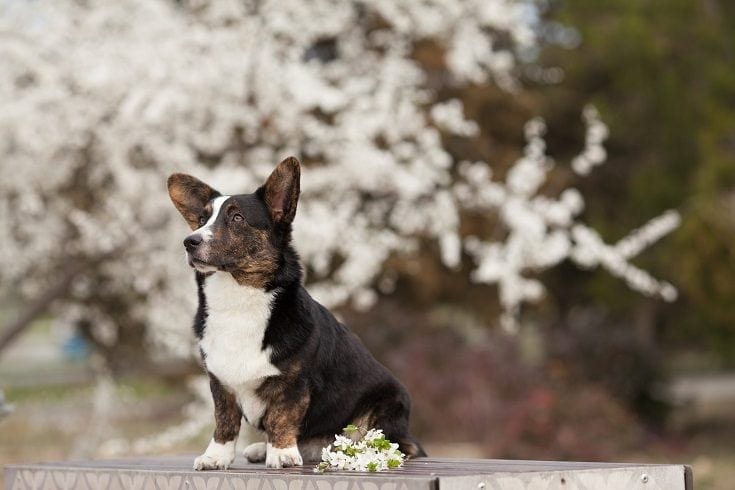
For several hundred years, it was common practice to interbreed these lovely pups. It is why they were often considered the same breed until halfway through the 19th century.
Then, separate groups that fancied the differences between the breeds stepped in. They are credited with saving each line’s strong heritage, separating them from each other, and halting the practice of breeding the two together.
Both the Pembroke and the Cardigan were primarily used as herding dogs. They are incredibly intelligent and loyal to their masters. Since they are so small, they can nip at the heels of cattle without being tall enough to get kicked in the head.
Physical Qualities of Cardigan vs Pembroke Welsh Corgi
Both Corgi breeds are well-known for their physical traits. They have shorter legs on long bodies. Their tall ears and pointed faces are part of what makes them so adorable. Both have fluffy double coats that shed quite a bit. There are specific physical differences that you can look at to figure out which is which.
Ears
The ears are one of the easiest ways to tell the difference between the Cardigan and Pembroke Corgis. The Cardigan Corgi has rounded ears that are longer and more oblong. They look almost like swiveling radars on top of their head.
In contrast, the Pembroke Corgis have more pointed ears. They appear to be triangular on top of their heads and emphasize the pointedness of their cute faces.
Tail
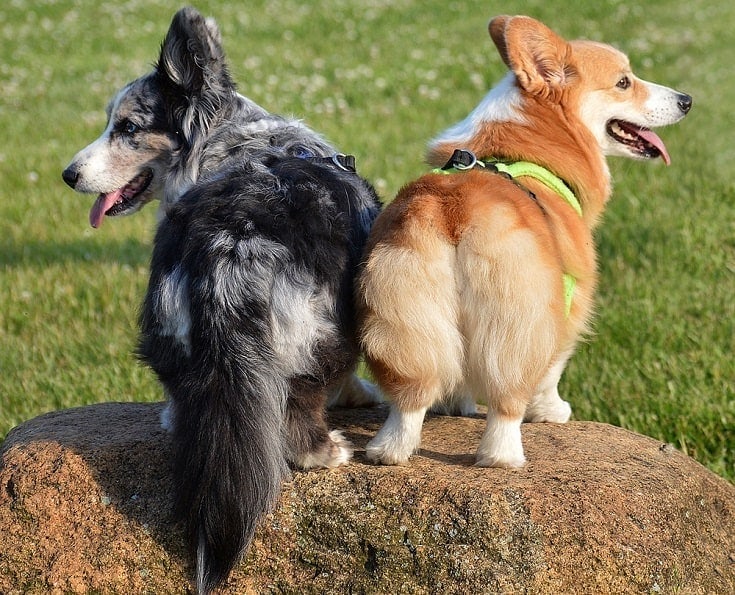
Their tails are their second biggest tell. Genetically, a Pembroke Corgi has a docked tail. It makes it look as though they don’t have a tale at all or a short stump.
In contrast to that, a Cardigan Corgi has a long tail similar to that of a fox. It is bushy and often white toward the top and curls around on itself at times, Spitz-like.
Common Coats
A Corgi’s coat is not the biggest indicator of which breed they are. They both have double coats and need a good bit of grooming so they don’t shed everywhere. Pembrokes typically have more tan in their coats, while some are mostly black and white.
Cardigan Corgis are better known for their colorful coat. They often have a mottled or brindle pattern. Although Pembrokes can have the black and white coats, seeing these colors on a pup makes it a good guess that they are a Cardigan.
Height
If you happen to have both breeds standing next to each other that are roughly the same age, you will readily tell the difference. The Cardigan Corgi tends to stand taller than the Pembroke. However, without the nearby comparison, it can be challenging to figure out.
Personalities: Different But the Same
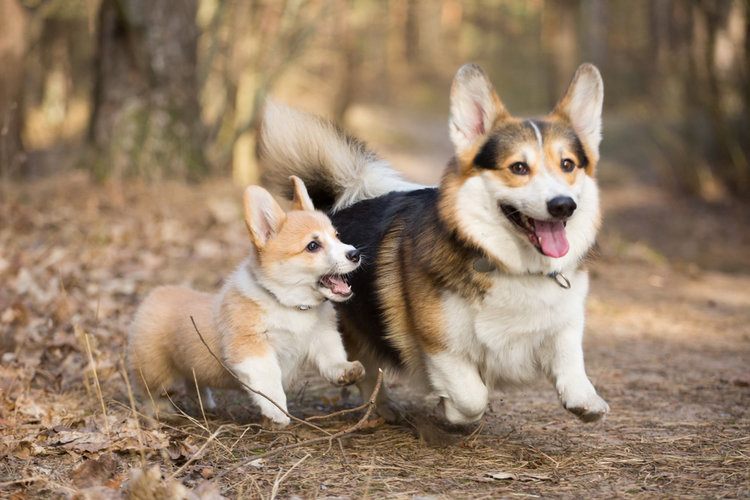
Both of the breeds have become popular family pets and can be quite lazy dogs. However, both have a heritage of being herding dogs and love to be out adventuring whenever the possibility presents itself. They are highly adaptable to their family’s lifestyle and can struggle with obesity if left without exercise too often.
The Cardigan Corgi is the more serious of the two breeds. They tend to be more aloof when it comes to meeting strangers and may also express territorial behavior. They are the harder-working breed out of the two, having maintained their herding capabilities for longer than the Pembrokes. They can make excellent guard dogs.
In contrast to the Cardigans, Pembrokes are bouncy dogs that love to cuddle and are continuously energetic. They always seem to be happy and are much less territorial, running up to strangers for a pet faster than baring any teeth.
The Pembroke Corgis were the Queen’s favorite dog for a reason. They love to gain attention and can be the class clown, clumsy on their little legs, and have the desire to be silly for attention. These dogs bark less than typical Cardigans because they have so much less to be worked up about.
Cardigan vs Pembroke Welsh Corgi – Common Attributes
Beyond their personalities and the difference in their physical qualities, the Pembroke and Cardigan Corgis share many traits. They have the same amount of energy, being classed as a medium-energy pup. They should receive around 45 minutes of activity a day to remain healthy and happy.
Don’t let the little legs on these pups deceive you. They are both surprisingly agile, even if the Pembrokes tend to stumble around a bit more. They are easy to train and get along quite well if you use positive reinforcement and food-based treats. If you can make it into a game, the Pembrokes will appreciate you more for it.
Both of these pups need to be socialized from an early age to develop into well-mannered dogs. They tend to herd other animals, no matter their size, and can be quite nippy as well. No matter if you are looking for a happy Pembroke or a serious Cardigan, you should expect a stubborn dog.

These dogs tend to have the same life expectancy, with the Cardigan capable of living slightly longer on average. They both live between 12 to 15 years. Health-wise, these dogs struggle with hip dysplasia, progressive retinal atrophy, and degenerative myelopathy. They can also suffer from intervertebral disk disease.
Since they are similar, they eat about the same amount and need similar grooming routines for healthy coats. They also cost roughly the same, typically between $1,000 to $2,000, depending on the breeder, their lineage, and their popularity. Pembrokes have risen in popularity in recent years, so be prepared to invest a little more.
Conclusion
When it comes to Cardigan vs Pembroke Welsh Corgis, you will find yourself with a loving companion, loyal to the end of their days. They can be couch potatoes or active, working dogs. Since they adapt readily to their family’s lifestyle, they need special motivation to get out and move at times.
Featured Image Credit to: (L) Hel Destro, Shutterstock | (R) Welshea, Shutterstock



